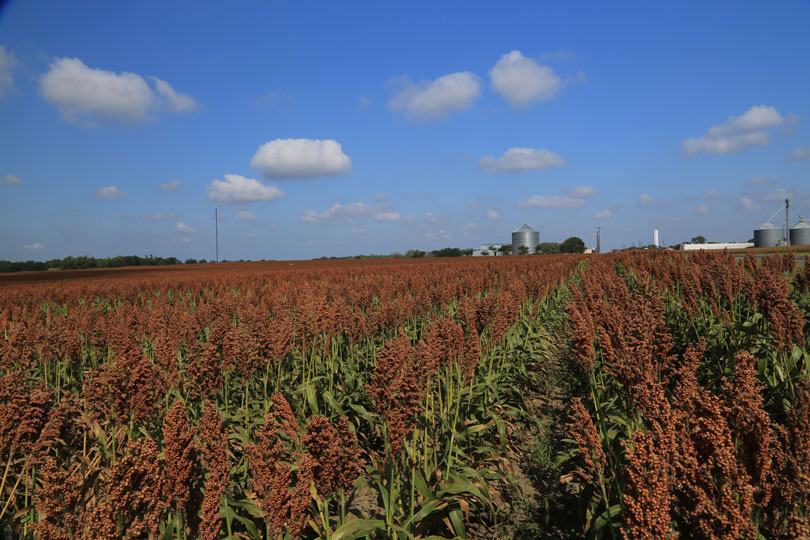By Justin Walker
Communications Specialist
Grain sorghum, with the ability to adapt to its climate, could potentially suppress soil nitrification and have lower nitrogen emissions, Dr. Nithya Rajan, Texas A&M AgriLife Research crop physiologist and principal investigator, said.
Thanks to a $500,000 grant by the U.S. Department of Agriculture National Institute for Food and Agriculture (USDA NIFA), Rajan is working to develop climate-smart sorghum to be more nitrogen efficient.
“Some plants can suppress nitrification by releasing inhibitors from their roots, a property known as biological nitrification inhibition (BNI),” Rajan said. “This will help with retention of nitrogen for longer periods of time to facilitate its uptake by crops and reduce the loss of nitrogen as nitrous oxide, a powerful greenhouse gas and ozone-depleting substance.”
If sorghum does contain BNI, it could fundamentally change the management of nitrogen across all crops, AgriLife Extension Agronomist Ronnie Schnell said.
“Improving nitrogen-use efficiency in grain crops will have substantial economic and environmental benefits for Texas and its farmers,” Schnell said. “However, there is a lot of research that needs to be done first to develop this technology.”
This isn’t the first AgriLife Research study on BNI properties. A previous USDA NIFA funded project screened for a range of diverse sorghum genotypes. AgriLife Research sorghum breeder Dr. William Rooney collaborated with Dr. Gunter Subbarao from the Japan International Research Center for Agricultural Sciences for the study.
“We believe that BNI-enabled crops and production systems are part of innovative solutions for a genetic-mitigation strategy to address problems associated with nitrogen fertilizers in agriculture,” Subbarao said.

